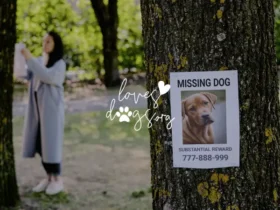
Bringing plants into your home and garden can enhance the aesthetics and create a tranquil environment. However, if you’re a dog owner, it’s essential to be cautious about the types of plants you choose. Many common indoor and outdoor plants can be toxic to dogs, causing a range of health issues from mild discomfort to severe poisoning. In this guide, we’ll explore various indoor and outdoor plants that are poisonous to dogs, helping you create a safe environment for your furry family member.
Indoor Plants:
- Sago Palm (Cycas revoluta):
- Despite its attractive appearance, all parts of the sago palm are highly toxic to dogs.
- Ingestion can lead to vomiting, diarrhea, seizures, and even liver failure.
- Dieffenbachia (Dumb Cane):
- This popular houseplant contains oxalates that can cause oral irritation, drooling, and difficulty swallowing.
- Keep it out of reach to prevent your dog from munching on its leaves.
- Pothos (Epipremnum aureum):
- Pothos contains insoluble calcium oxalate crystals, causing mouth irritation, excessive drooling, and vomiting.
- Peace Lily (Spathiphyllum):
- The peace lily contains calcium oxalate crystals that can lead to oral irritation and digestive distress if ingested.
- Snake Plant (Sansevieria):
- Snake plants can cause vomiting, diarrhea, and lethargy if consumed by dogs.
- Place them in areas inaccessible to your pet.
Outdoor Plants:
- Azalea/Rhododendron:
- These colorful flowering shrubs contain grayanotoxins that can lead to vomiting, diarrhea, and even cardiac issues in dogs.
- Oleander:
- All parts of the oleander plant are extremely toxic to dogs, potentially causing severe heart problems and even death.
- Castor Bean Plant:
- The seeds of the castor bean plant contain ricin, a potent toxin that can lead to abdominal pain, vomiting, and organ failure.
- Lilies:
- Various types of lilies, including Easter lilies, can cause kidney failure in cats, and some can be harmful to dogs too.
- Ingestion leads to vomiting, lethargy, and loss of appetite.
- Foxglove:
- Foxglove contains cardiac glycosides, which can lead to heart rhythm abnormalities, vomiting, and even death.
Creating a Safe Environment:
- Research Before Purchasing:
- Before bringing any new plant into your home or garden, research its toxicity to dogs.
- Opt for non-toxic alternatives to ensure your pet’s safety.
- Secure Plants:
- Place toxic plants out of reach or use hanging planters to prevent your dog from accessing them.
- Teach “Leave It” Command:
- Train your dog to respond to the “leave it” command, which can help discourage them from interacting with plants.
- Supervise Outdoor Time:
- When your dog is outdoors, monitor their activities to ensure they don’t consume or come into contact with toxic plants.
Creating a pet-friendly environment involves being aware of potential hazards, especially when it comes to indoor and outdoor plants. By familiarizing yourself with the plants that are poisonous to dogs and taking proactive steps to keep them out of reach, you can ensure your furry companion’s safety and well-being. Remember, a little caution goes a long way in creating a harmonious living space for both you and your beloved four-legged family member.







Find Loves Dogs on Social